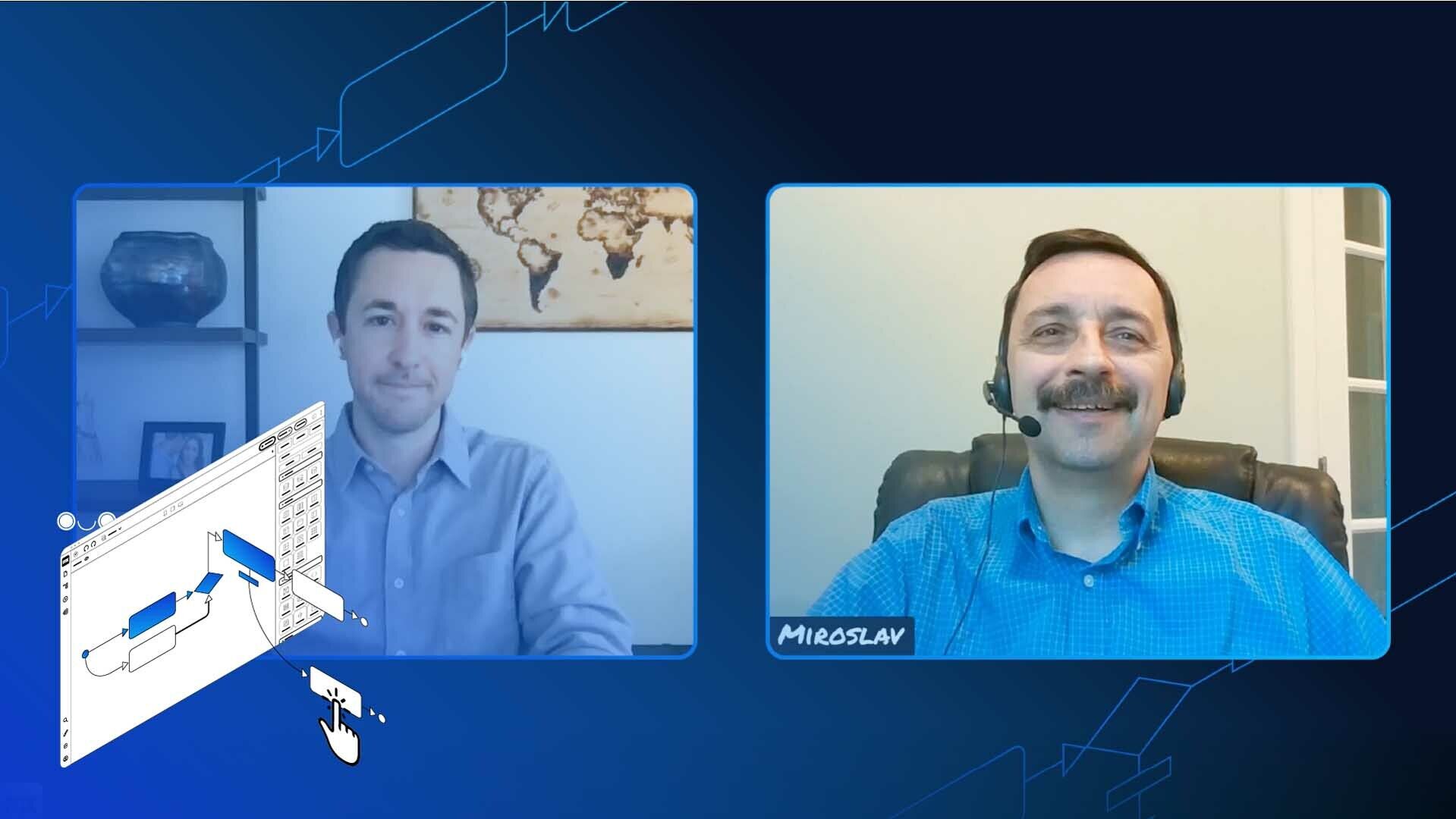Evaluating Low-Code Platforms and Project Fit

Trane Technologies is a recognized global leader in both the residential and commercial HVAC spaces.
Headquartered in Ireland and a part of the S&P 500 since 2010, Trane has more than 99 manufacturing facilities across the globe and approximately 50,000 employees. Its globally-known brands, including Ameristar, Service First, Thermo King, and Trane, led to nearly $12.5 billion in revenue in 2020.
At Mendix World 2021, Miroslav Samoilenko, Trane Technologies’ Director of Integration Architecture, joined Eric Tieniber from Mendix for a conversation around his low-code platform evaluation process and the evolution of his app development portfolio with Mendix.
Making the Case for a Low-code Platform
For many businesses, no-code solutions can be an attractive option to widen the pool of employees who can contribute to the ever-increasing need for business applications, but can come with limitations.
Samoilenko defined no-code as the “capability to visualize business logic using widgets from a predefined palette.” Drag-and-drop functionality for business solutions is an ideal scenario. However, as he also pointed out, “No vendor can provide you with widgets to address all your potential needs. At some moment of time, you have to create a business logic.”
That’s where low-code can come in – providing a similar level of democratization in the development process while allowing seasoned developers to layer in the customizations required by every individual enterprise.
When evaluating low-code vendors for Trane, Samoilenko was “trying to understand a low-code tolerance level, which is what are my use cases, what I have to switch from no-code to low-code, and, most importantly, what are the use cases which forced me out of my platform.”
Given that so many vendors offer some form of low-code, it can be a challenge to find the right vendor to fit the variety and volume of projects in a large enterprise.
A strategy that Trane uses is to check against market-leading reports, such as the Gartner Magic Quadrant, to find a short list of vendors and compare against any you may already be using. Matching your inventory of systems against available vendors can point to some opportunities.
Samoilenko also looks at the architecture of any given platform.
He recommended that organizations looking at things like citizen development or using a distributed development team using the local platform lean toward vendors with microservices architecture. For Trane and many other organizations, they will likely need to rely on more than one vendor to meet all their needs.
Dismantling the Monolith
Trane’s journey with low-code started about five years ago. They had a 15-year old custom e-commerce solution that had grown into a very large monolith. To dismantle this monolith, the team at Trane decided to take the Strangler Fig approach.
This entails building a new system on top of an old system until that old system can be removed. Because, as Samoilenko described, Trane wanted to “split small pieces of the monolith into independent microservices,” low-code and Mendix were a perfect match.
Trane adopted Mendix as its enterprise low-code platform and has deployed it on a wide variety of applications ranging from e-commerce and sales automation to Excel replacement.
For Trane, a key value that they see from Mendix is that it is a feature-rich platform, including components such as “an integrated DevOps automation and monitoring and dashboards.” Because these are standard features of the platform, this efficiency allows for these core members of Trane’s IT team to focus on wider innovation and features across the organization.
Bringing “Shadow IT” out of Shadows
Another feature that working in a low-code environment provides is “bringing your shadow IT out of [the] shadow,” described Samoilenko.
Shadow IT involves any use of technology to conduct business that isn’t part of the organization’s IT ecosystem. This can include using personal email, unsanctioned devices, or things like Excel to track data outside central systems. Despite what is often created with the best intentions, shadow IT can disrupt workflows and cause security issues.
Low-code development allows for simpler, faster business application development and acts as a viable alternative to using something like Excel.
As Samoilenko noted, “Your business analyst, instead of creating unmanageable Excel-based applications, they use low-code.”
Samoilenko cautioned, though, that thinking of development in this way, especially if an organization is thinking about moving toward
The Mendix Control Center allows for program owners to easily see app usage, contributors and other key information about the entire Mendix ecosystem. This allows for owners to be able to look at any application, whether made by a development team or a business unit and ensure that anything built in the platform is working and fulfilling a business need.
Tips for Beginners
Advising other organizations looking at adding low-code to their IT ecosystem, Samoilenko recommended not starting too big or too small. Because adopting any new platform comes with some time and money investment, if an organization starts too small, “you may not realize benefits from investment.”
On the other hand, if an organization starts too big, “you run the risk of failure,” he noted.
Samoilenko’s advice for getting the most value on your investments faster? Land somewhere right in the middle:
- Start with a medium-sized project “which you can deliver using your favorite procode technology within a year with a two-pizza team.”
- Experiment with a variety of projects “that will give you enough funding to create custom components and adapt the technology to your enterprise.”
Repurposing Resources, Adding Value
For Samoilenko and Trane Technologies, it’s the combination of microservices, feature set, and integration possibilities that Mendix offers that provide value. Using Mendix in various parts of the organization has allowed Trane to maximize the use of its IT team.
“That’s how much value this platform gives to my company,” he concluded.